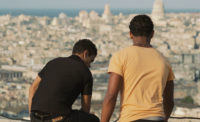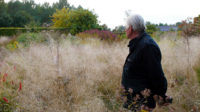Throughout Weekend in Havana with Geoffrey Baer, premiering on PBS July 18, there’s an impression that Havana, and Cuba, is somehow on the cusp, now that Fidel Castro is dead and relations with America are normalizing. (The program was made before President Donald Trump “canceled” the Cuban policies enacted by President Barack Obama). The reality is unquestionably more complex, arguably less rosy, and barely visible in this hour-long video postcard.
To his credit, host Geoffrey Baer creates a beautiful travelogue, full of iconic locations (Malecón, the Plaza Vieja, the Tropicana) and cliché symbols of Cuban life (old cars, cigars, mojitos). He experiences Havana with the help of three locals: architect and restorationist Daniel de la Regata, acclaimed flamenco dancer Irene Rodriguez, and Grammy-nominated jazz pianist Roberto Fonseca. All three are exceptional guides through a vibrant, cacophonous, changing city, taking Baer into corners of the Cubano experience — a crumbling 19th century sugar plantation, an intimate Santeria celebration, a school for young architectural restorationists — typically off-limits to tourists. Architect de la Regata, especially, provides valuable insight into Havana’s history, the work needed to restore the city, and where the future might lead. And for all of his excitement about the road ahead, it’s laced with a palpable pragmatism.
That attitude proves a welcome counterweight to Baer’s consummate, enthusiastic tourist. He totes a still camera, is caught in b-roll footage placing himself in the middle of everyday experiences (like kids playing soccer) to take photos, and gives wide-eyed “can you believe this tiny cab!” looks to the camera. Sure, he is a tourist, and this show, it seems, is for people who would likely be disgorged into the city from one of those white-elephant cruise ship clogging Havana’s harbor. But Baer’s infectious affability, normally an asset, feels wrong here. Havana is not a normal destination; it requires a more delicate touch that Baer either misses or doesn’t have.
To be fair, he acknowledges his insight and experience are limited after spending only four days in Cuba’s capital. And while presenting a more measured view of the city might have been outside the scope of what he wanted to (or could) accomplish, it does sneak in. In the program’s last moments, Baer looks out over the city from a rooftop jazz gig and reflects on the “paradox” of contemporary Havana: emerging-middle-class Cubans listen to jazz as an ocean liner chugs into view while poorer residents are stuffed into crumbling and overcrowded buildings below. But Weekend in Havana isn’t framed around that paradox. Rather, it’s a conclusion, of sorts, that feels superficial. There are some allusions throughout about the realities of everyday Cubans, but Baer is so invested in hitting Havana’s high points that he gives those very real issues — food shortages, climate-change-related sea-level rise, government repression — only passing glances. (There is no mention that the influx of American tourists might be exacerbating those problems.)
Context is important in any meaningful engagement with a place. That’s especially true for Cuba, where the population still struggles under the Communist regime. Yet this reality plays a far too limited role in Weekend in Havana, which undercuts Baer’s goals for his Cuban dispatch. But, worse, the omission does little to encourage Americans to be better, more conscientious visitors and not just one more tourist simply passing through.










Post a comment to this article
Report Abusive Comment